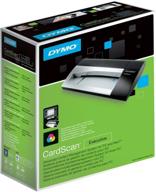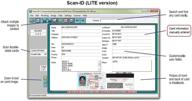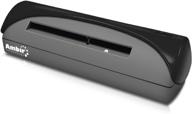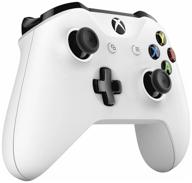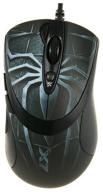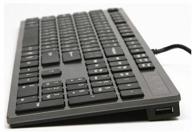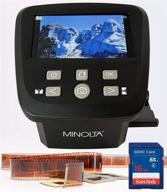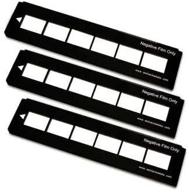Choosing the Best Slide & Negative Scanner for You
When it comes to digitizing your old 35mm slides and negatives, choosing the right scanner is key. The scanner you select will determine the image quality, scanning speed, and overall user experience. Here are some key factors to consider when picking out the best slide and negative scanner for your needs.
Optical Resolution
One of the most important specifications of a film scanner is its optical resolution, measured in dots per inch (dpi). This determines the amount of detail the scanner can capture. For reference:
- 2400 dpi: Suitable for snapshots and standard prints
- 3200 dpi: Good for high quality enlargements
- 4000+ dpi: Ideal for critical applications like archiving
Higher optical resolutions allow you to enlarge scans without losing sharpness and detail. But they come at the cost of slower scan speeds.
Dynamic Range
A scanner's dynamic range, or density range, determines its ability to capture highlights and shadows. Look for a density range of at least 3.6 for 35mm film and 4.0 for medium format. Higher is better for preserving details in both bright and dark areas of your negatives.
Another interesting products
Scan Area
The scan area dictates what film formats the scanner can accommodate. Common options include:
- 35mm film strips and slides
- Medium format film up to 6x9cm
- Large format 4x5 inch film
Larger film sizes produce higher resolution scans but require more expensive scanners. Select a scanner that matches the film formats you need to digitize.
Top products in 🔍 Slide & Negative Scanners
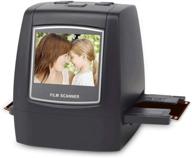

9 Review

Connectivity and Software
Look for a scanner with USB 3.0 or higher connectivity for fast transfer speeds. The included software should provide editing tools like cropping, color correction, and dust/scratch removal. Support for TIFF, JPEG, PNG, and RAW formats is ideal for archiving scans.
Some all-in-one photo scanners also scan prints, documents, and books. This added versatility can be handy for managing all your digitization needs.
Automatic vs. Manual Feed
Auto feed scanners offer batch scanning convenience. But manual feed gives you more control over aligning each frame perfectly. Auto feed is quicker for large volumes, while manual feed ensures precision for selective high-quality scans.
Special Features
Higher-end scanners boast extras like Digital ICE technology to remove scratches and dust automatically. Some also include built-in LCD screens, storage capacity, and slide holders for added efficiency.
Weigh your needs, volume, and budget to pick the slide and negative scanner with the right blend of resolution, formats, and features. Taking the time to make an informed selection will ensure you have the best tool for digitally preserving your irreplaceable memories.
Similar products
Key Features to Look for in a Slide & Negative Scanner
When shopping for a dedicated photo scanner for digitizing 35mm slides and negatives, there are several key features and specifications to evaluate to find the right model for your needs and budget.
Optical Resolution
The optical resolution, measured in dots per inch (DPI), determines how much detail the scanner can capture. Look for:
- 2400-3200 dpi - Good for standard prints and snapshots
- 3200-4000 dpi - Best for enlargements and high resolution
- 4000+ dpi - Ideal for critical archiving applications
Dynamic Range
The dynamic range, or density range, affects the scanner's ability to capture highlights and shadows. A range of 3.6-4.0 is recommended for most slide and negative film.
Supported Film Formats
Check what film sizes the scanner can accommodate including:
- 35mm slides and strips
- Medium format 60x90mm
- Large format 4x5 inches
Connectivity
Look for USB 3.0 or newer ports for fast data transfer speeds to your computer.
Scan Speed
Measured in seconds per scan or scans per minute. Faster speeds help when digitizing large collections.
Software
Good software helps edit scans with tools like:
- Cropping and rotating
- Color correction
- Dust and scratch removal
- File conversion to JPEG, TIFF, PNG, etc.
Manual vs. Auto Feed
Auto feed is faster but manual gives you more control over each scan.
Extras
Added features like Digital ICE for automatic scratch removal, LCD screens, and slide holders can optimize the scanning workflow.
Balancing these specifications and features with your personal needs and budget will help you select the best slide and negative scanner for digitizing and archiving your irreplaceable photos.
Scanning 35mm Negatives vs Medium Format vs Large Format
When digitizing your film photo collections, the size and format of your negatives and slides is a key factor in determining scanner requirements. Here is an overview of digitizing the most common film formats.
35mm
The small 36x24mm frame of 35mm negative film was once the most popular consumer format. 35mm film can be digitized using dedicated film scanners, flatbed scanners, or DSLR scanning rigs. A 2400 dpi scanner is sufficient for average use cases. The main advantage of 35mm is convenience - strips of 6 frames make batch scanning and mounting multiple slides easy.
Medium Format
Medium format encompasses a range of larger film sizes from 60x60mm up to 60x90mm frames. The larger negative size produces higher resolution scans than 35mm, revealing more detail. But dedicated medium format scanners are more expensive. Standard options include:
- 60x60mm (6x6cm) - Square format with 10-12 exposures per roll.
- 60x70mm - Rectangular panorama format with 8-10 exposures.
- 60x90mm (6x9cm) - Rectangular format with 12-16 exposures.
Expect to pay $500-1,000 for a good medium format scanner with 3000+ dpi optical resolution.
Large Format
Large format refers to film sizes of 4x5 inches or larger. These produce the highest resolution scans but require more expensive, specialized scanners to accommodate the large film size. Dedicated large format scanners start around $2,000. Large format includes:
- 4x5 inches - Common large format size for landscapes.
- 8x10 inches - Larger studio camera format.
Scanning large format negatives can result in 200+ megapixel image files.
The format you need to scan determines the required scanner specifications and controls overall scanning costs and workflow. Maximizing scan quality then depends on other factors like the scanner's optical resolution and dynamic range capabilities.
Optical Resolution and Dpi Guidelines
A scanner's optical resolution, measured in dots per inch (dpi), determines how much detail it can capture from film negatives or prints. Higher resolutions produce higher quality scans but come with larger file sizes and slower scan speeds. Here are some general guidelines for choosing a scanner resolution based on your needs:
Standard Prints and Snapshots
For digitizing common printed photos up to 5x7 inches, a resolution around 300 dpi is sufficient. This captures enough detail for screens and basic prints. Standard photo prints are usually around 250-300 dpi.
Enlargements and High Quality Prints
For larger high quality prints up to 8x10 inches, scan at 350-400 dpi. This retains good detail for enlarging a portion of the image later.
Critical Archiving
For critical archiving of valuable images and maximum detail, scan at 600 dpi or higher. This allows significant enlargement with minimal loss of quality.
35mm Film
For 35mm negatives, an optical resolution around 3000 dpi is recommended. This equals approximately 10 megapixels which is ample resolution for prints up to 8x10 inches.
Medium Format Film
For medium format film, look for a scanner with 4000 dpi optical resolution which provides over 50 megapixels of data.
Rule of Thumb
A good rule of thumb is to multiply the desired print dimensions by 300. For example, for an 8x10 print, 8 inches x 300 dpi = 2400 dpi. Using this formula ensures sufficient resolution for your intended print sizes.
Finding the optimal balance between resolution, file size, and scan time requires understanding your priorities - archiving for the future vs convenient sharing. Referencing these benchmarks can help narrow your scanner options.
Scanner Software: Bundled vs Third Party Options
When purchasing a film or photo scanner, the included software can make a major difference in your workflow and end results. Here is an overview of using the bundled software versus integrating third party options.
Bundled Scanner Software
Most scanner manufacturers include their own proprietary software for controlling scans and processing images. The advantages of bundled software are:
- Designed specifically for that scanner model
- Streamlined scan settings and one-touch presets
- Auto modes for color correction, dust/scratch removal etc.
- No learning curve, easy out-of-box experience
The main limitations are lack of editing tools beyond basic adjustments and proprietary file formats.
Third Party Software
Popular third party alternatives like Adobe Photoshop, Lightroom, VueScan, and SilverFast offer benefits like:
- More advanced editing and post-processing tools
- Non-proprietary standard image formats
- Customizable manual controls
- Ability to use same software across multiple scanner brands
The trade-off is a steeper learning curve. Third party software involves more setup work to integrate with your particular scanner.
Recommended Workflow
A hybrid approach combines the strengths of both routes:
- Use scanner manufacturer's software for initial capture and scans.
- Open images in third party software for specialized editing and archiving.
This optimized workflow takes advantage of built-in scanner integration, then leverages expanded tools from third party options. The bundled software gets images off the scanner while specialized programs enhance the final results.
Benefits of Amazon Prime for Buying Slide & Negative Scanners
For analog photography enthusiasts looking to purchase a new slide or negative scanner, being an Amazon Prime member can provide some useful benefits and perks.
Free Two-Day Shipping
One of the biggest advantages of Amazon Prime is free two-day shipping on your scanner purchase and any accessories or archival materials you need for your digitization project. This ensures quick delivery so you can start scanning your collection right away.
Free Returns
Amazon Prime also provides free returns on eligible items. So if you get your scanner and it doesn't quite meet your needs or expectations, you can easily box it back up and return it at no additional cost.
Prime-Exclusive Deals
Amazon Prime members get exclusive access to special deals and discounts on select slide and negative scanners. So you may be able to save some extra money on your purchase as a Prime customer.
Try Before You Buy
If you want to try out a scanner before fully committing, select Amazon stores allow Prime members to use the scanner on-site before buying. This helps you get hands-on to evaluate image quality and feel.
Easy Price Comparisons
You can conveniently compare different makes and models side-by-side on Amazon. Plus see real customer reviews and ratings for each scanner further simplifying your buying decision.
Overall, being a Prime member can provide valuable conveniences and potential savings when investing in a quality slide or negative scanner. The free fast shipping and returns help make the purchase process smooth and risk-free.
Epson V850
The Epson V850 is a professional-quality scanner that is designed to help users preserve priceless originals. Here are some key features and benefits of the Epson V850:
Epson V850 Slide & Negative Scanner Amazon
The Epson V850 slide & negative scanner is available on Amazon. Here are some key points to consider:
Overall, the Epson V850 slide & negative scanner is a professional-quality scanner that produces great results when scanning slides and film. However, customers should be aware of the mixed reviews regarding its ease of use when scanning negatives.





